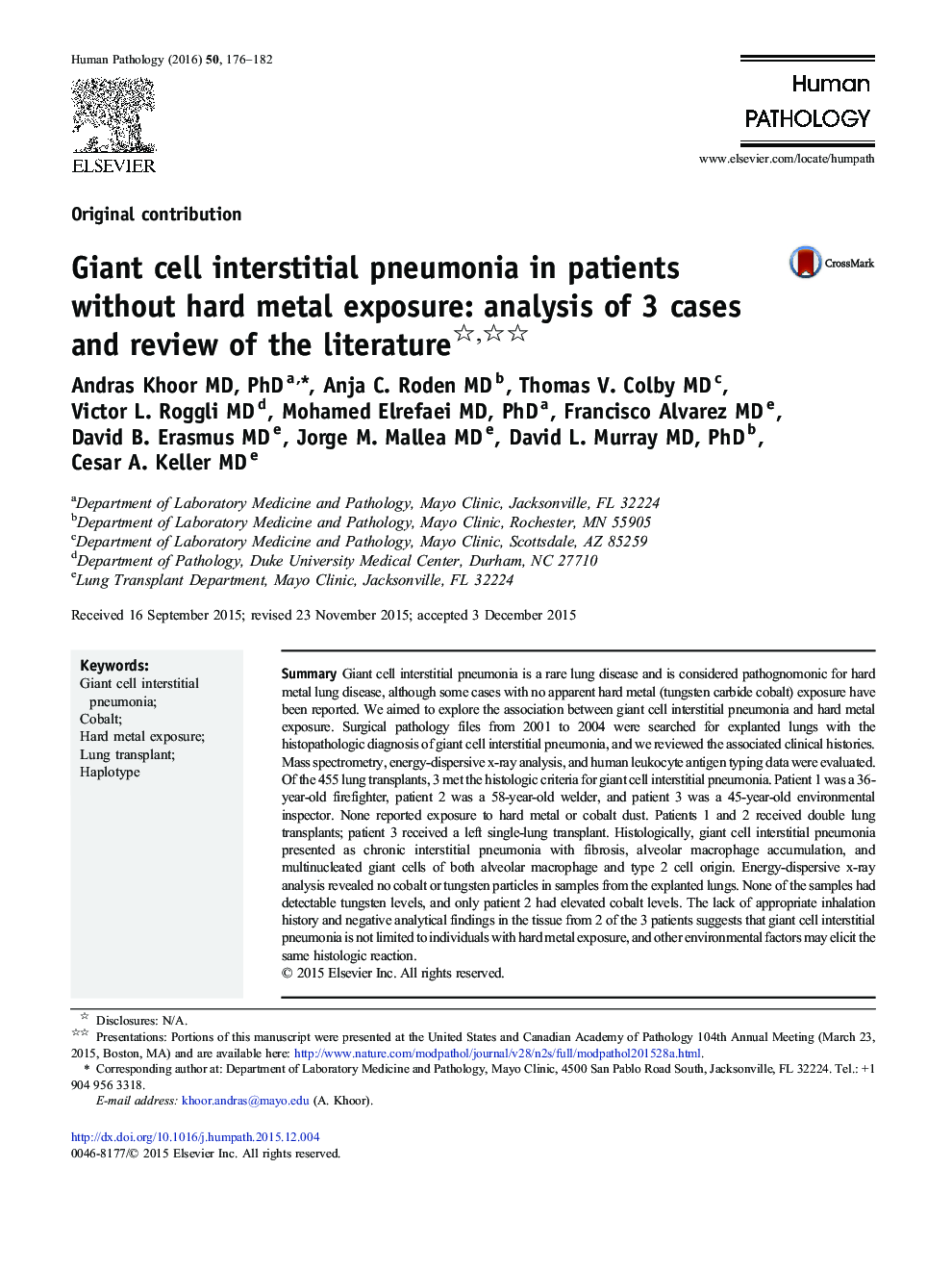| کد مقاله | کد نشریه | سال انتشار | مقاله انگلیسی | نسخه تمام متن |
|---|---|---|---|---|
| 6215563 | 1606660 | 2016 | 7 صفحه PDF | دانلود رایگان |
SummaryGiant cell interstitial pneumonia is a rare lung disease and is considered pathognomonic for hard metal lung disease, although some cases with no apparent hard metal (tungsten carbide cobalt) exposure have been reported. We aimed to explore the association between giant cell interstitial pneumonia and hard metal exposure. Surgical pathology files from 2001 to 2004 were searched for explanted lungs with the histopathologic diagnosis of giant cell interstitial pneumonia, and we reviewed the associated clinical histories. Mass spectrometry, energy-dispersive x-ray analysis, and human leukocyte antigen typing data were evaluated. Of the 455 lung transplants, 3 met the histologic criteria for giant cell interstitial pneumonia. Patient 1 was a 36-year-old firefighter, patient 2 was a 58-year-old welder, and patient 3 was a 45-year-old environmental inspector. None reported exposure to hard metal or cobalt dust. Patients 1 and 2 received double lung transplants; patient 3 received a left single-lung transplant. Histologically, giant cell interstitial pneumonia presented as chronic interstitial pneumonia with fibrosis, alveolar macrophage accumulation, and multinucleated giant cells of both alveolar macrophage and type 2 cell origin. Energy-dispersive x-ray analysis revealed no cobalt or tungsten particles in samples from the explanted lungs. None of the samples had detectable tungsten levels, and only patient 2 had elevated cobalt levels. The lack of appropriate inhalation history and negative analytical findings in the tissue from 2 of the 3 patients suggests that giant cell interstitial pneumonia is not limited to individuals with hard metal exposure, and other environmental factors may elicit the same histologic reaction.
Journal: Human Pathology - Volume 50, April 2016, Pages 176-182
